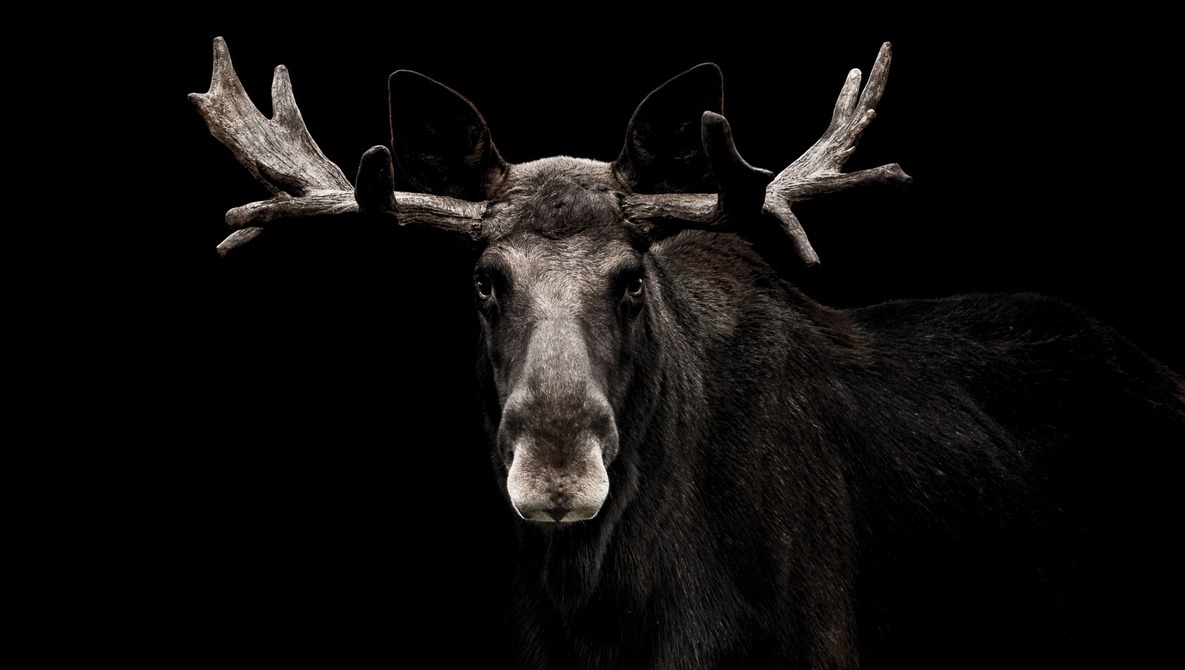George Wheelhouse is a fine art nature and landscape photographer from Bedfordshire, U.K. I recently spoke with him about his contemporary portraits of animals, as well as his more traditional woodland and mountain landscapes. Though many of Wheelhouse's favorite subjects are local, he told me that he loves to travel to remote locations, particularly to Nordic areas. He also shared that he is quite fond of boreal forests like Norway, Sweden, Finland, Iceland, and Canada.
Wheelhouse explained that when he was younger he spent his time drawing animals from photos in books. He was also interested in arts, crafts, and woodworking. As he approached college, he put those passions on hold in favor of a computing degree. Later, in 2007, he visited the Grand Canyon where he was blown away by its awesome scale and the constantly changing light. That was enough to plant the seed, and he began taking more and more interest in photography. Eighteen months later he bought his first camera, an Olympus E-410.
There was something about outdoor photography that really spoke to Wheelhouse. He originally wanted to shoot landscapes, specifically trees and woodland. They were, after all, his first love. But as a young boy adventuring through the woods, he was fascinated by any form of wildlife that he encountered. From the first few attempts at trying to photograph deer with a wide-angle lens he was hooked. From them on he began acquiring longer and longer lenses to get the images he wanted of the wildlife he encountered. He began to find inspiration from Nick Brandt’s work. He says that Brandt's ethereal images of African wildlife reeled him in when he was still considering photography as an artistic outlet. Wheelhouse loves the way that Brandt manages to capture the mood. He considers Brandt's portraits to be the perfect combination of intimacy, nature, environment, and storytelling.
That brings us to today. Wheelhouse currently shoots on a Nikon D800. For animal portraits he uses a Nikon 70-200mm f/2.8 or a Nikon 300mm f/2.8. The faster f/2.8 aperture is invaluable while shooting wildlife in low-light conditions. Tripods are a must. Wheelhouse explained that he shoots almost every frame from a Manfrotto 190CXPRO3 with a 468MG hydrostatic ball head. This allows him to focus on the composition of the image, and nail the focus.
Wheelhouse spends the majority of his time editing in Lightroom, only using Photoshop for small adjustments such as increasing the canvas size of the image to improve composition. The non-destructive editing power of Lightroom really appeals to Wheelhouse. He stated he really enjoys having the ability to make future tweaks with ease. He also explained while we talked that he really takes his time in the "digital darkroom" and may spend weeks tinkering with an image before deciding its finished. He’s a big believer of having a cooling-off period before revisiting the image with a fresh eyes.
Wheelhouse says that his current focus is on his “On White” and “On Black” projects for high-key and low-key nature portraits, respectively. He likes to capture natural subjects that suggest a willingness to pose for their portraits even though they are oblivious. He started experimenting with this back in 2010 while thinking about combining a traditional (human) portrait approach with wildlife photography, and found low-key portraits to be a particular interesting approach. Wheelhouse eventually established a process that achieved his desired look through a combination of in-camera techniques and post-processing. As he continued refining his process, he learned more and more about which conditions were favorable for capturing the look he wanted. While his photography techniques were maturing, his digital workflow was also evolving. He is now able to visualize the portraits in his mind, and from there, refine his technique throughout the process.
Wheelhouse explained that his main restriction is natural light since he uses it exclusively for his portraits. He typically tries to line the subject with a strong side-light and with a background either strongly or dimly lit. Wheelhouse hopes to one day extend the projects to a studio to be for more consistent and reliable light. He goes into a step by step post processing guide in a blog article you can read here.
Whether it's with an intimate portrait of an animal or a mountain sunrise, Wheelhouse makes it his goal to share the feeling of staring nature in the face. His high-key and low-key portraits are a more explicit example of that feeling, and he enjoys confronting the viewer with relatable characters, irrespective of species. In contrast, he said it’s also immensely satisfying to provide a more conscious daily connection to nature for people who buy his prints for their home.
In closing, he left me with some valuable insight. He suggested thinking less about the destination, and more about the journey. Photography isn’t a race to the top, it’s a process of self-improvement and a craft to master over a lifetime.
Follow George Wheelhouse on his website, Instagram, and Twitter.
Images used with the permission of George Wheelhouse.













Enjoyed getting inside of Mr. Wheelhouse's mind, background and process for a while. More of this please!
Thanks Andrew! Stay tuned another artist spotlight piece coming soon!
I dig. The photos aren't something I see everyday. More importantly it's really interesting to hear the thought process of an artist who has the discipline to focus on a consistent body of work.